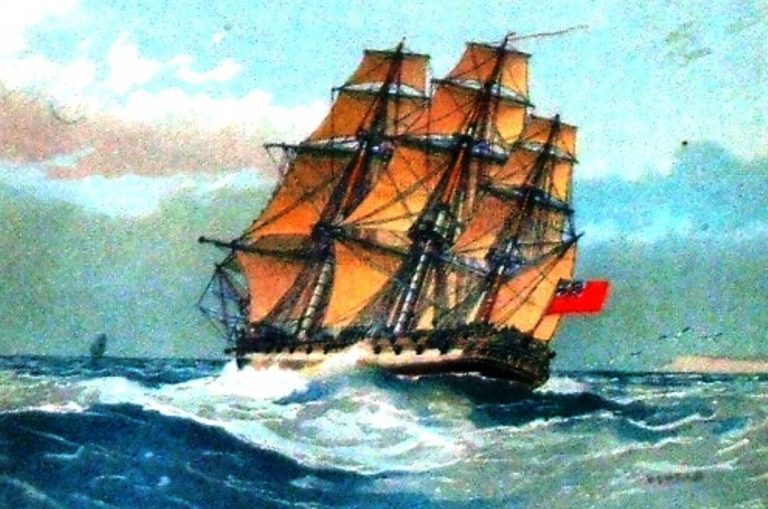Like almost all the remote and little-known islands of the world, the history of the Azores has also been associated with the mythical kingdom of Atlantis.

First Discovery
The Carthaginians were probably the first to land in the remote archipelago. The hypothesis is supported by the discovery of some coins of 300 BC on the island of Corvo by an English expedition.
The origin of the name Azores (Açores, in Portuguese) has several theories. The most accredited associates the name of the archipelago with the sighting by the first navigators of numerous buzzards, at the time confused with the goshawk, another bird of prey called açor in Portuguese.
In historical terms we find some references to nine similar oceanic islands corresponding to the Azores as early as the second half of the fourteenth century in some maps and books such as the Medici Atlas, dated to 1351, which seems to indicate the position of the Azores. The Azores also appear in two Majorcan cards, the Catalan Atlas of 1375 and the Guillem Soler card of 1385; and the Book of Knowledge also mentions them with small variations. However, the archipelago was officially discovered only in 1427-31 following the Portuguese maritime epic, led by the Infante D. Henrique. It is uncertain whether the first navigator to reach the Azores was Diogo de Silves in 1427, or Gonçalo Velho Cabral in 1431.
The population of the islands continued to grow in the fifteenth century, starting from the Eastern and Central Group and continued in the sixteenth century reaching the Western Group. In 1493 Christopher Columbus made a stop in the Azores while returning from his first trip to the Americas. The sixteenth century was of course the golden age for the Azores, which were found in a strategic position along the routes to the Indies and the New World.
The First Settlers
In the centuries following the people who came primarily and mainly from Portugal, settlers from other European and non-European countries were added: Flemish, Moorish, Genoese, English, French and African slaves. The settlers built houses and villages, prepared the ground for crops by deforesting large areas and imported farm animals such as cattle, sheep, goats and pigs, chickens, rabbits, both for subsistence and for trade.
Following the death of Henry the Navigator, the cardinal king of Portugal, the nation sank into a dynastic crisis with several pretenders to the Portuguese throne. It was Spain that obtained and maintained possession of the Azores in the period from 1580-1642; The Azores archipelago was the last part of the Portuguese Empire to remain under the Spanish domination of Philip II and was returned to Portugal in 1640 with the end of the Iberian Union.
The ‘Golden Age’
In the second half of the seventeenth and eighteenth centuries, Portugal went through a period of splendor, which also extended to the Azores, thanks to the riches in gold and diamonds that come from the colonies of Brazil.
During the 19th century, the Portuguese civil war had serious repercussions on the islands: in 1829, in Vila da Praia (now Praia da Vitória), the liberal party got the better of absolutism and the Council of Regency of Mary II was established Portugal on the island of Terceira, which became the headquarters of the new regime.
In 1836 the archipelago was divided into three districts and this administrative division remained in force until 1976: the division did not follow the natural groupings of the islands: it made the position of each district capital coincide with the three main cities (none of the western group ):
The three districts were defined as follows:
Ponta Delgada, which included São Miguel and Santa Maria, with the capital Ponta Delgada on São Miguel.
Angra do Heroísmo, which included Terceira, São Jorge and Graciosa, with the capital Angra do Heroísmo su Terceira.
Horta, which included Pico, Faial, Flores and Corvo, with the capital Horta on Faial.
In more recent years (1931) the Azores (like Madeira and Portuguese Guinea) rebelled against the dictatorship of the Salazar regime and were ruled by rebel soldiers for a short time. During the Second World War, the Portuguese dictatorship allowed the Anglo-Americans to install military bases in the Azores to monitor the Atlantic while maintaining diplomatic and commercial relations with the Axis countries, thus maintaining a “neutral” position.
Modern History of the Azores
Following the carnation revolution (in Portuguese Revolução dos Cravos) of 1974 which ended the long authoritarian regime founded by António Salazar and after the creation of the Republic in Portugal, in 1976 the districts were suppressed and the Azores were proclaimed Autonomous Region (Região Autónoma dos Açores).
The Autonomous Region of the Azores today divides its political and administrative institutions into three capitals: the Presidency in Ponta Delgada, on the island of São Miguel, the Supreme Court in Angra do Heroismo, on the island of Terceira, and the Legislative Assembly Horta, on the island of Faial.
for more details see Wikipedia









Did the Vikings ever land in the Azores?
Honestly… we don’t know. There is no proven historical evidence